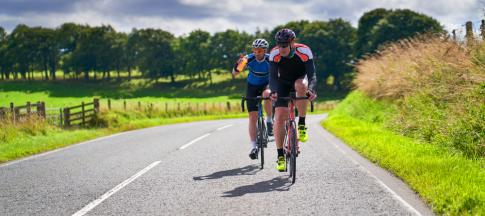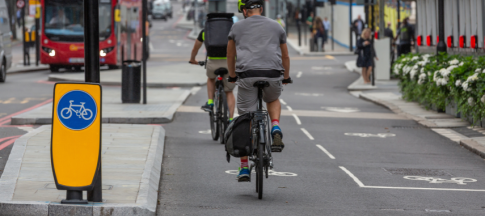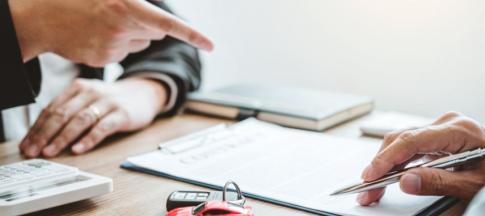
Brake reports that 10 young children (aged seven or under) are killed or seriously injured on the road every week.
Knowing how to keep your children safe in the car, including the UK laws around car safety, is extremely important.
UK law on car seats
Children must use car seats until they’re 12 years old or 135cm tall – whichever comes first.
A child must wear a seatbelt if they’re over 12 or more than 135cm tall.
If you don’t comply, you could be fined £500 or get points on your license.
The only car seats which can be used in the UK are those which are EU-approved and have the right labels:
- For height-based seats, there must be a label showing a capital ‘E’ in a circle and ‘R129’.
- For weight-based seats, there must be a label showing a capital ‘E’ in a circle and ‘ECE R44’.
There are two recognised ways to decide which car seat your child needs, either based on height or weight.
Height
Height-based seats are known as ‘i-Size’ seats. They’re intended to encourage parents to keep their children in rearward-facing seats for longer, preferably until they’re at least 15 months old.
You need to check the seat is suitable for your child's height too – the retailer you bought the seat from will be able to advise you on this.
Weight
For children up to 10kg a rear-facing, a lie-flat baby carrier or baby seat should be used.
If your child weighs 13kg and can sit up alone, EU legislation considers it appropriate for a child to be moved to a forward-facing position, using a harness or safety shield.
But this is generally discouraged until your child weighs around 18-25kg, as their bodies may not be strong enough until then.
Which child car seat should I buy?
Unfortunately, there’s not one size fits all when it comes to car seats.
It depends on your child’s weight, height and what stage of their development they’re in.
First and foremost, the seat must have a label showing a capital E in a circle to show it’s EU-approved and safe to use in the UK.
You can only use a child car seat if your car has a diagonal belt strap or provided that the seat is:
- designed specifically for use with a lap seatbelt
- fitted using ISOFIX anchor points
Different types of car seats explained
There are different types of car seats for different stages of child development.
Rearward-facing baby seats (newborn to 13kg)
This seat faces towards the rear of the car and fits in the back passenger seat.
You can also fit it in the front seat if the airbag has been deactivated, but it’s still a lot safer to put them in the back.
An adjustable harness and the adult seatbelt keep the baby strapped in place.
New babies should lie mostly flat when sleeping, as carriers prop the baby in an upright position that they shouldn’t be left to sleep in for longer than two hours.
Combination seat
According to EU regulations, once your baby reaches 13kg they can be moved into a forward-facing seat which can be fitted to the front or rear passenger seat.
However, many parents and campaigners don't recommend moving to a forward-facing seat until they’re 18-25kg.
This seat would remain fixed in the car and wouldn't be suitable to carry the baby around in.
Forward facing seat
Like rearward-facing seats, forward-facing seats are used on the back seat and can only be used in the front if there isn't an airbag fitted or if the airbag is turned off.
The seat must have a harness and is fixed in place by the adult seatbelt.
Booster and backrest seat
Designed for use with a full adult seatbelt (not just a lap belt), these raise a child's seating position.
Booster seat
It's safest to use a booster seat in the rear of the car.
It's important the seat is correctly adjusted as they don't come with integral harnesses to hold the child in place.
The law says that booster seats shouldn't be used for children shorter than 125cm or weighing less than 22kg.
ISOFIX
ISOFIX is intended to make fitting car seats as easy as possible.
New cars are made with ISOFIX points built into them and child seat manufacturers build ISOFIX fitting points into their seats.
It essentially means car seats can be plugged into ISOFIX points in the car.
Contact your car's manufacturer to find out if your car has ISOFIX points. You can contact the manufacturer through RoSPA's website.
Travelling safely with your child in the car
When you’re fastening your child into their seat, the three most important points are:
- The belt should be worn as tightly as possible.
- The lap belt should go over the pelvic region, not the stomach.
- The diagonal strap should rest over the shoulder, not the neck.
Each time you fasten your child into their seat:
- allow plenty of time to check the seat and secure your child
- if the seat has a harness, make sure the harness is secure – you should only be able to fit one or two fingers between the child's chest and the harness
- if using a booster seat, the adult seatbelt should rest on your child's shoulder, not neck and from hip bone to hip bone – never tuck the diagonal seatbelt under your child's arm
Car seat buyers' guide
Follow our checklist before buying your car seat:
- Will the seat be used to carry your baby from the car or will you be leaving the seat in the car?
- Do you want a combined carrier and travel system?
- It's not just the age of the child that counts, make sure you know their weight and size.
- Disconnect the passenger seat airbag if you want to put the car seat in the front of the car.
- Remember, not all car seats fit all cars! Make sure the seat you've chosen fits your make and model.
Most retailers let you try before you buy and have trained fitters who can help.
Should I buy a new or second-hand car seat?
Having a baby most definitely doesn't come cheap, and hand-me-downs can sometimes be a great alternative to splashing the cash on new items.
However, the safest advice is not to buy or use a second-hand child car seat.
It's impossible to know if it's been involved in an accident, as damage is not always visible.
There's also the fact the instruction manual may be missing which will make it harder to fit safely.
Buying new is the safest option for your baby.
Travelling in the car while pregnant
In the UK, all pregnant women must wear a seatbelt while travelling in a car, whether they’re in the front or back of the vehicle.
There are some rare circumstances where a doctor may say you’re medically excused and you’ll be given a Certificate of Exemption from Compulsory Seat Belt Wearing.
You'll need to always keep the certificate in the car with you, inform your insurer and show it to the police if asked.
The Royal Society for the Prevention of Accidents (RoSPA) gives the following guidance on the right way to wear a seatbelt when pregnant:
- place the diagonal strap between the breasts, resting the strap over the shoulder
- the lap strap should go across the hips, fitting comfortably beneath the bump
- it's safer for pregnant women and the unborn child to wear a lap and diagonal seat belt, rather than a lap only belt
- in cars fitted with air bags, the front seat should be pushed back as far as possible

 ,
,  ,
, 
